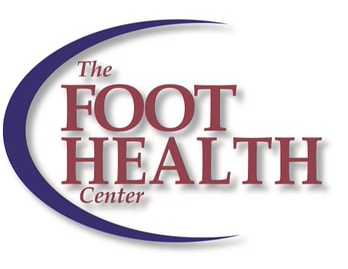Are you experiencing foot pain? If so, you may have metatarsalgia. This is a common condition involving inflammation and pain in the ball of the foot. It can develop from years of wearing shoes with thin soles or high heels. Walking or standing on hard surfaces for prolonged periods can also put additional pressure on the bones, causing inflammation.
Although typically not serious, foot pain can be debilitating and keep you from enjoying regular exercise, walking, and even standing. While there are many treatments available, metatarsalgia surgery may be the most effective. Continue reading below to discover more.
Anatomy & Metatarsalgia Explained
The long, middle bones of your foot are known as the metatarsal bones. Each of these bones ends at the ball of your foot. When walking, your metatarsal bones bear your full body weight as your foot pushes off the ground.
Symptoms of metatarsalgia can include:
- Burning, aching, or sharp pain in the ball of your foot
- Pain made worse when you run, walk, stand, or flex your feet
- Shooting or sharp bursts of shooting pain, tingling or numbness in your toes
- Feeling as though you have a pebble in your shoe
When there is additional pressure on the end of one or multiple bones, it presses on the skin beneath.
This causes inflammation and pain in the ball of the foot, also known as metatarsalgia. A callus, or hard growth of skin, can also form in the area due to the on-going pressure.
Can Foot Pain Be Cured Without Surgery?
Many individuals find they can ease their discomfort with conservative treatments, such as footwear, insoles, ice packs, or medications. Cortisone injections may be right for some cases. While non-surgical solutions can be effective, they are only ideal for reducing mild to moderate foot pain.
What Is Metatarsalgia Surgery?
Surgery for metatarsalgia involves resetting fractured or injured metatarsal bones. Putting the bones back in place relieves pressure, allowing your foot to heal while also alleviating pain.
Debilitating foot pain can also stem from injured or weak metatarsal bones. This can lead to difficulty walking or standing, increasing the need for surgery. The goal of surgery is to relieve discomfort and improve range of motion.
When Is Surgery Necessary?
When conservative, non-surgical treatments cannot relieve your pain, or conditions such as hammertoe have made your metatarsalgia worse, surgery may be best. This option involves realigning the metatarsal bones. Most surgical procedures are reserved for moderate to complex foot pain when bones need resetting to heal correctly.
How Can I Prepare For Surgery?
Preparing for foot surgery can help make for quicker healing. Treating your home as a place to recover can make a significant difference. Create an environment that allows you to relax and de-stress as you heal. Essential pre-operatory planning should also include:
- De-cluttering: Clean and organize any spaces you may need to use during recovery. These include hallways, bedrooms, and bathrooms. Make enough space for crutches or a scooter.
- Enlisting a family member or friend: Have someone you trust to drive you to your appointment and home after surgery. Have them stay with you for the first few days of recovery if you live alone. Choose someone who can get groceries, prepare meals, and help you bathe if necessary.
- Setting up night lights: You may need a little extra light to guide to the bathroom or to get something to eat in the middle of the night. Placing night lights throughout your home can prevent injury.
- Organizing the bathroom: Be sure to arrange essentials such as your soap, toothbrush, toothpaste, and toilet paper in ways that are easy to reach. This helps you avoid unnecessary movement while recovering. Gather all supplies needed for healing before the day of surgery.
- Avoiding stairs: Set up space to sleep, rest, and recover on the main floor of your home so you don’t need to go up or downstairs. Be sure to surround the space you chose with anything you might need as you rest. These include your laptop, notepads, water bottles, pillows, phone chargers, blankets, and remote controls.
- Planning your meals: Prepare some hearty, healthy meals before your surgery. Freeze them so you can stay full and nourished while you recover. It’s also good to arrange any snacks, water, and coffee to make them easily accessible.
- Preparing medications and ice packs: Be sure to have ice packs, prescriptions, and clean washcloths on hand for a better recovery experience.
What Can I Expect While Recovering?
Metatarsalgia surgery is typically an outpatient procedure and you can go home the same day. Your foot is protected as it heals inside a removable cast called a boot, and crutches are provided to help you move around. Full recovery can take eight to twelve weeks to complete. You may begin light exercise around the eighth week, depending on your situation.
At The Foot Health Center, we understand how important pain-free mobility is for your health, comfort, and happiness. Dr. Louis Aquino, Dr. David Kinscherff, and our team are passionate about relieving discomfort and improving your quality of life. We offer surgery for metatarsalgia and conservative treatments to individuals across Maryville. Contact us to schedule your foot health consultation today!


